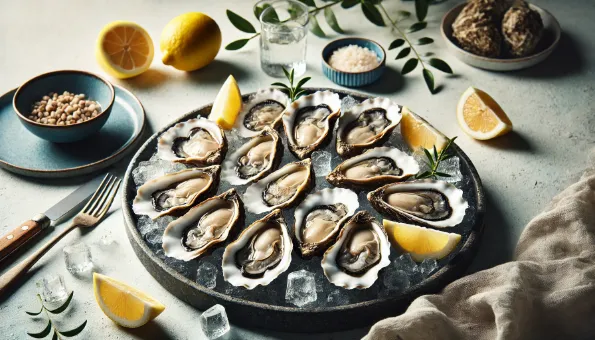Oysters: Nutrition, Benefits & How to Eat Them
Briny, mineral-rich shellfish packed with protein, zinc, and vitamin B12—delicious raw on the half shell or cooked in countless ways.

What Are Oysters?
Oysters are bivalve mollusks found in both wild and farmed coastal waters. They are prized for their **briny, mineral flavor** and can be eaten **raw or cooked**.
Nutrition (per 100 g, raw)
- **Calories:** ~68 kcal
- **Protein:** ~7 g
- **Fat:** ~2 g (rich in omega-3)
- **Zinc:** >500% DV
- **Vitamin B12:** >300% DV
- Also provides iron, copper, selenium
Benefits
- Excellent source of **zinc** for immune & hormone health
- High in **B12** for energy & nerve function
- **Lean protein** with healthy fats
- Sustainable aquaculture: oysters filter water and improve ecosystems
Considerations
- **Raw oysters** can carry Vibrio bacteria—higher risk for immunocompromised
- Allergies to shellfish possible
- High in natural sodium—moderation advised
How to Eat
- **Raw:** shuck, serve on ice with lemon, mignonette, hot sauce
- **Cooked:** grill, broil, bake (Rockefeller), steam, or fry
- Pair with crisp white wine or stout beer
Summary
Oysters are a nutrient powerhouse—delicious raw or cooked, but handle and source safely.
- 1. Oysters
oysters – školjke koje se jedu sirove ili kuhane; bogate cinkom, B12, proteinima i omega-3 masnim kiselinama

